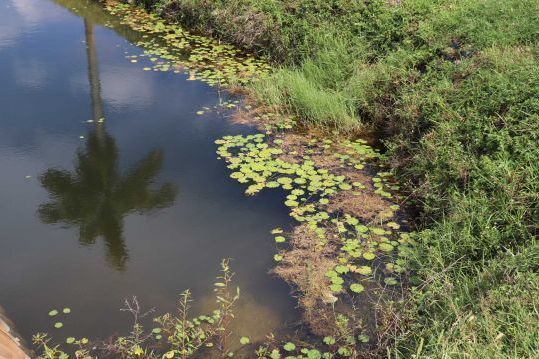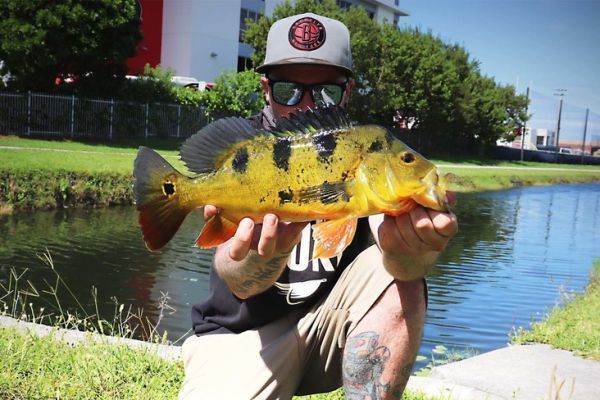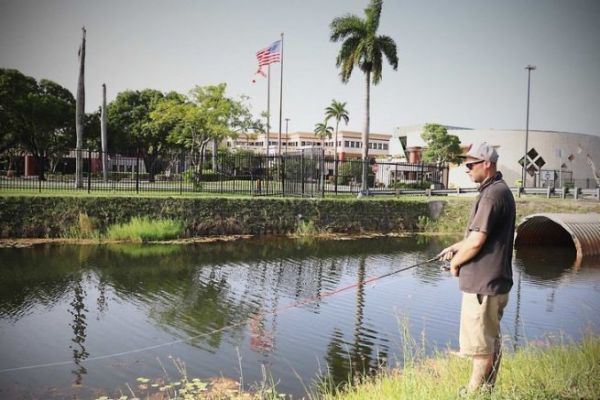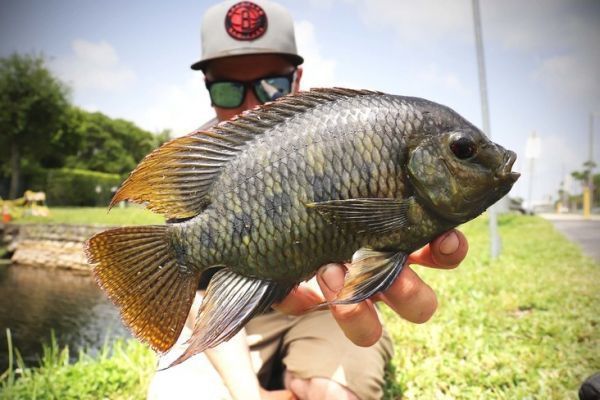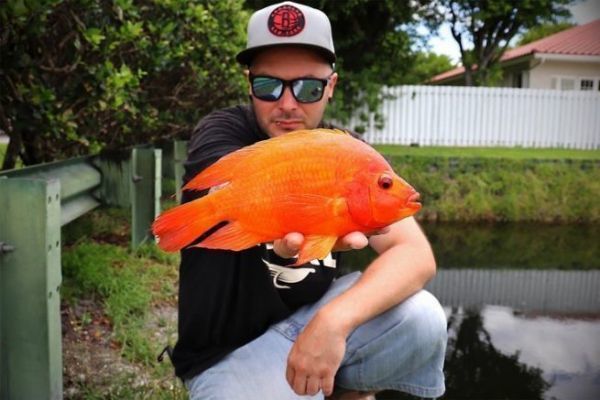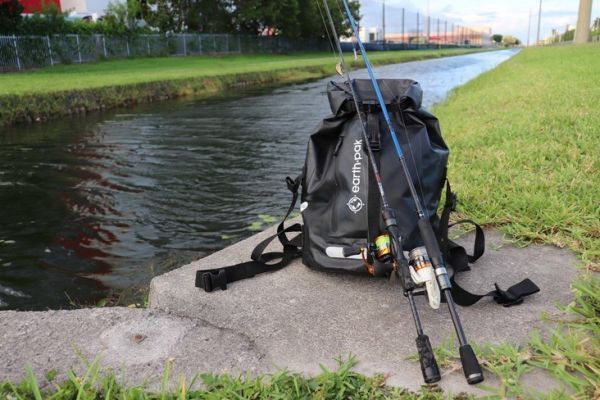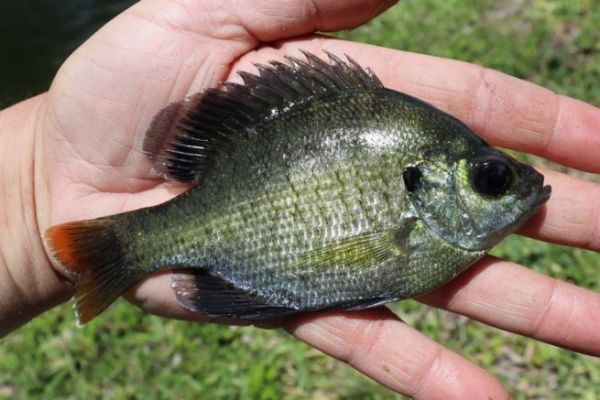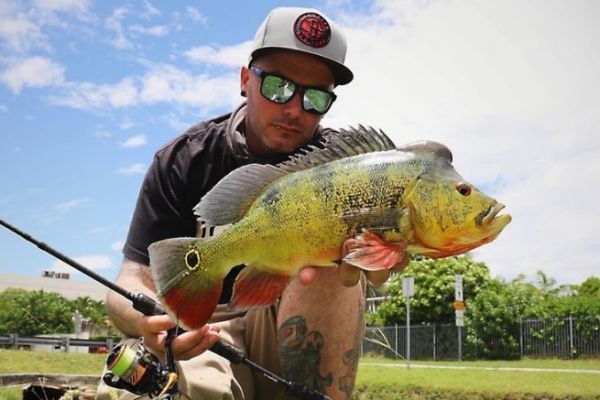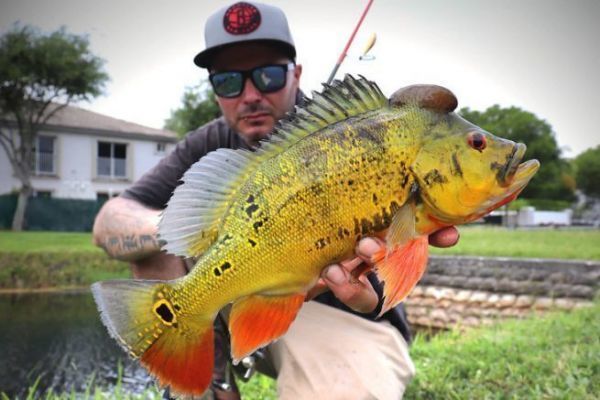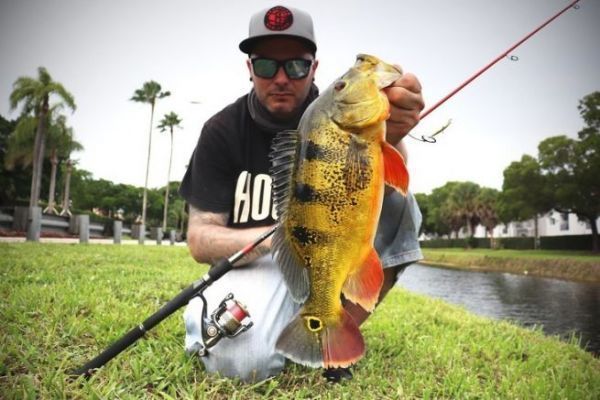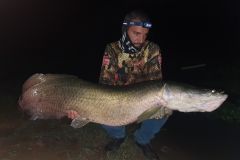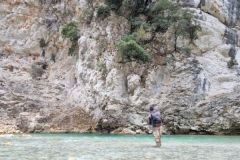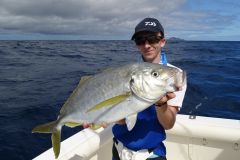Mayan Cichlid
The Mayan Cichlid, also mistakenly called Mayan Tilapia, is native to Central America, including Mexico and Nicaragua. The term Tilapia refers to a family of Cichlids native to Africa, so a Tilapia is necessarily from Africa.

In Southeast Florida, the Mayan Cichlid is probably one of the most common species, and I can? without taking too much risk, guarantee that you'll catch one the day you visit.
What's more, it's quite aggressive and doesn't hesitate to attack big lures, so even without looking for it, you're likely to catch some. Easily recognizable with its pinkish color and large black vertical stripes.
Midas Cichlid
At first glance, the Midas Cichlid could be mistaken for a goldfish, or even a carass, because of its bright red/orange color. Some individuals are not completely red, and include black. In any case, it's easy to spot, especially as it hangs around the edges, but not easy to catch.

It is often found in small sizes, and you need to look for the bigger fish as only they are likely to bite on lures. They are most common in southern cities like Doral.
Salvini Cichlid
The Salvini Cichlid has been present in Florida for a long time. It was declared eradicated in 1981, but a few populations have survived and are still present today in the waters of Southeast Florida, more specifically around Fort Lauderdale, Hollywood and in the Everglades.

Its range is more limited, and its size is also smaller, which makes it more difficult to catch with lures.
Jaguar Guapote
The Jaguar Guapote is a different size from the three previous species, but is also a member of the Cichlidae family. It has a more massive body and can, in rare cases, reach a weight in excess of 1 kilogram, although smaller specimens are usually encountered.

Redhead Cichlid
Finally, the Redhead Cichlid is also native to Central America, and can be found in Mexico and Guatemala. The male is much more intensely colored than the female, with red, blue and yellow, and is also more imposing.
The shape of the female can be confused with that of the Spotted Tilapia, but if you pay close attention to the colors and the red and yellow she wears, identification is not a problem.

Its range appears to be fairly limited, and it is found mainly around West Palm Beach and does not seem to have spread south.

 /
/ 

